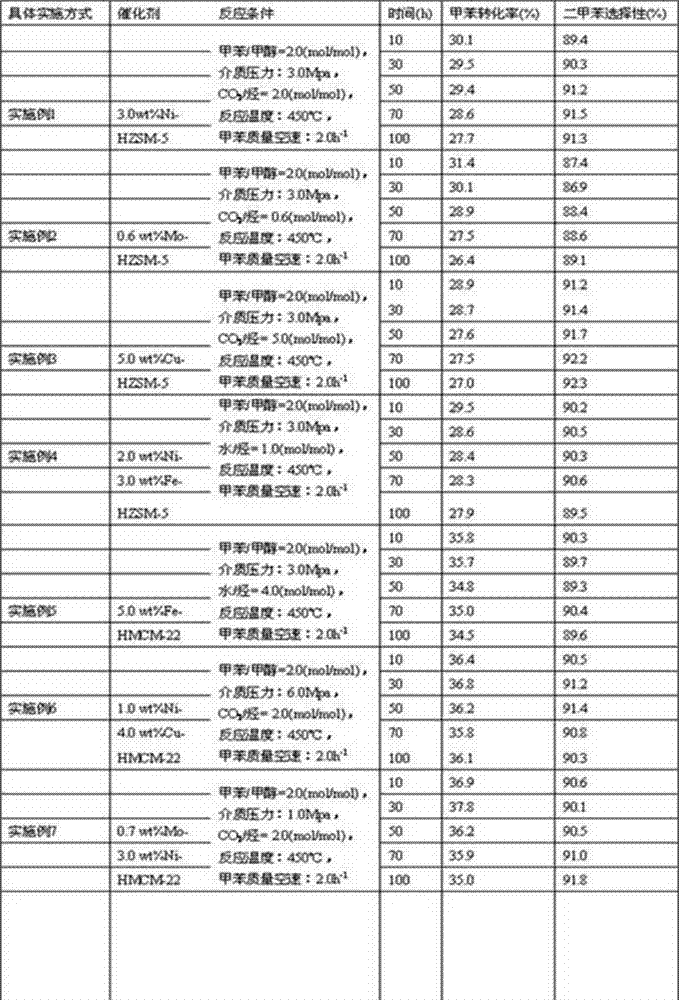Method for improving reaction stability for synthesizing xylene through toluene and methanol alkylation
A xylene and chemical synthesis technology, which is applied in the field of continuous and stable reaction of synthesizing xylene, can solve the problems of hydrogen consumption, high production and operation cost, large energy consumption, etc., and achieve the effects of inhibiting deactivation and improving reaction stability.
- Summary
- Abstract
- Description
- Claims
- Application Information
AI Technical Summary
Problems solved by technology
Method used
Image
Examples
Embodiment 1
[0023] Embodiment 1: earlier the appropriate amount of glass beads are loaded into the bottom of the reaction tube bed of the miniature fixed-bed catalytic reactor with an internal diameter of 1.5 cm, a thin layer of quartz wool is spread on the glass beads, and then 3.0 ~ 5.0 g of cylindrical Ni The permanent HZSM-5 molecular sieve catalyst is loaded into the reaction tube, and the upper layer is filled with an appropriate amount of glass beads, and then 150ml / min of hydrogen gas is introduced to ensure that the airflow flows evenly through the catalyst bed layer; the temperature is programmed to 500°C over 100 minutes, and the temperature is lowered after activation for 1 hour To 450°C, change to carbon dioxide, and use a metering pump to feed the reaction raw materials with the composition of toluene / methanol = 2.5 (mol / mol), and keep the mass space velocity of toluene at WHSV=2.0h -1 , keep carbon dioxide / hydrocarbon = 2.0 (mol / mol), keep the pressure of the reaction medium...
Embodiment 2
[0024] Example 2: The difference between this embodiment and Embodiment 1 is that Mo-modified HZSM-5 molecular sieve is used as a catalyst, and carbon dioxide / hydrocarbon is kept at 0.6 (mol / mol), and other reaction conditions are the same as in Example 1.
Embodiment 3
[0025] Example 3: The difference between this example and Example 1 is that the Cu-modified HZSM-5 molecular sieve is used as the catalyst, and the carbon dioxide / hydrocarbon ratio is kept at 5.0 (mol / mol), and other reaction conditions are the same as in Example 1.
PUM
 Login to View More
Login to View More Abstract
Description
Claims
Application Information
 Login to View More
Login to View More - R&D
- Intellectual Property
- Life Sciences
- Materials
- Tech Scout
- Unparalleled Data Quality
- Higher Quality Content
- 60% Fewer Hallucinations
Browse by: Latest US Patents, China's latest patents, Technical Efficacy Thesaurus, Application Domain, Technology Topic, Popular Technical Reports.
© 2025 PatSnap. All rights reserved.Legal|Privacy policy|Modern Slavery Act Transparency Statement|Sitemap|About US| Contact US: help@patsnap.com


